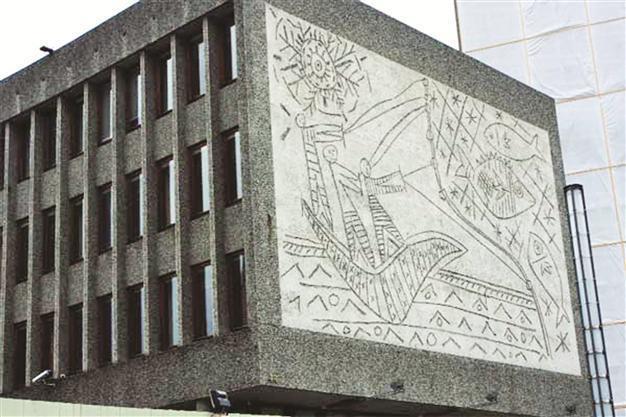Picasso murals under threat after attack in Oslo
OSLO - Hürriyet Daily News

Picasso made sketches for five murals to be executed on the buildings.
The Norwegian Directorate for Cultural Heritage fears that Picasso’s first monumental concrete murals, which were made between the late 1950s and the early 1970s for two government buildings in Oslo, may be destroyed, a according to The Art Newspaper.The buildings were severely damaged during the deadly terrorist attack in the Norwegian capital in July 2011, and the government is now considering whether to demolish the modernist buildings that form the “regjeringskvartal,” or government, quarter.
“If the buildings were demolished and the murals integrated into new ones or brought to another site, they would no longer be the works Picasso intended,” says Jørn Holme, the head of the Directorate for Cultural Heritage.
After the attack on July 22, Rigmor Aasrud, the minister for government administration, reform and church affairs, publicly asked whether it would be better to demolish the buildings.
The ministry has asked several architects to propose suggestions for the regjeringskvartal, providing options to both retain and demolish the buildings. The architects will present their proposals this summer. A report by the Directorate for Cultural Heritage concluded that, despite the bombing, the buildings are not unsafe and can still be used.
‘Buildings are important’
“We still think that listing is appropriate. The buildings [are not only important] because of the works of art [that were] made especially for them, they are also a cornerstone in Norwegian architectural history and stand for the country’s development as a welfare state after the Second World War,” Holme said.
The structures were built in the 1950s and 1960s with breccia, a building technique using natural concrete, which was popular in Norway after the war.
Picasso made sketches for five murals to be executed on the buildings. The largest, “The Fisherman” (1970), is installed on the façade of Y-block. The Norwegian artists Inger Sitter, Kai Fjell and Carl Nesjar, also made works for the buildings.
















